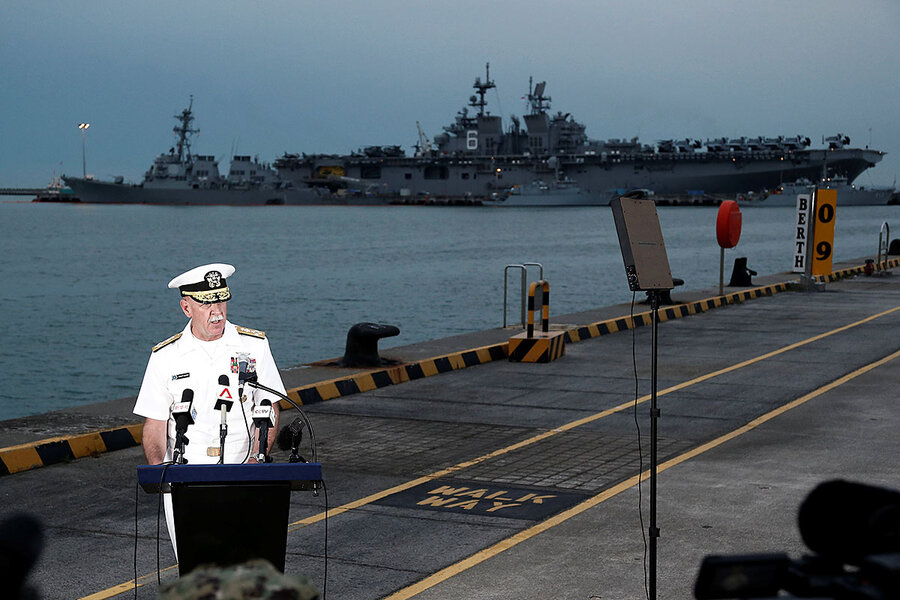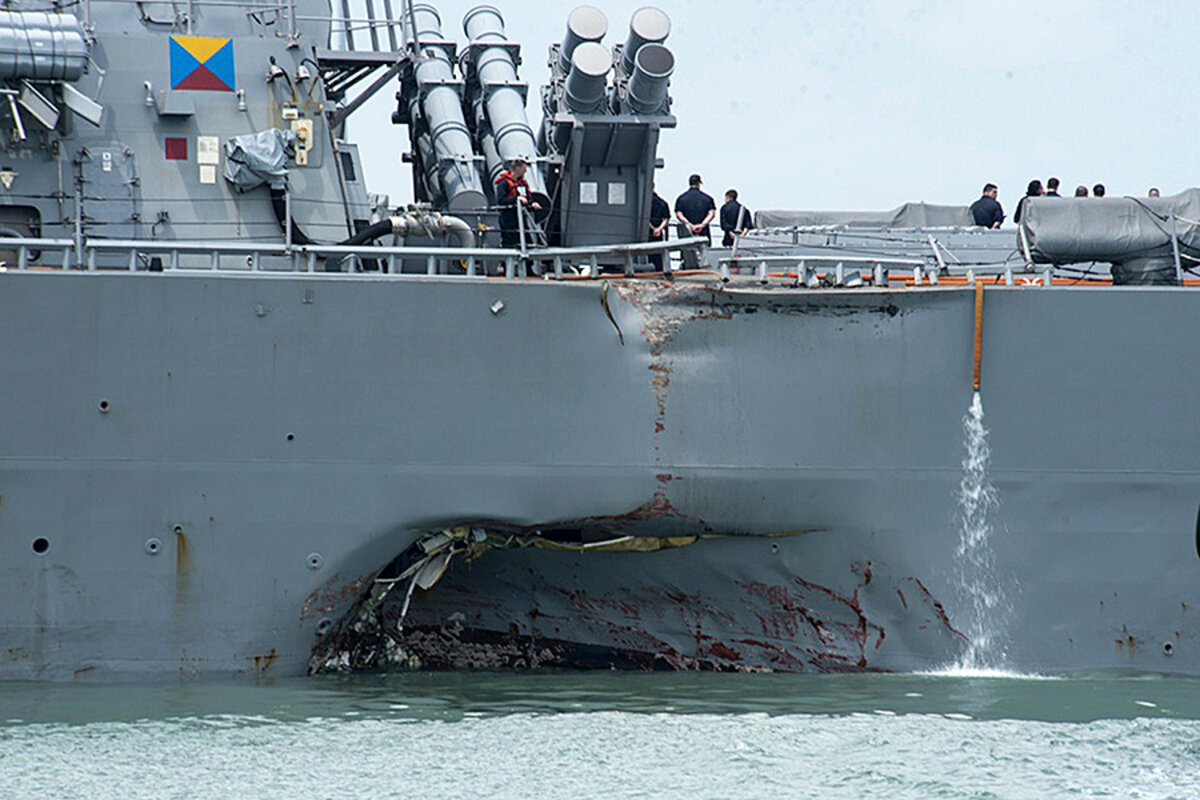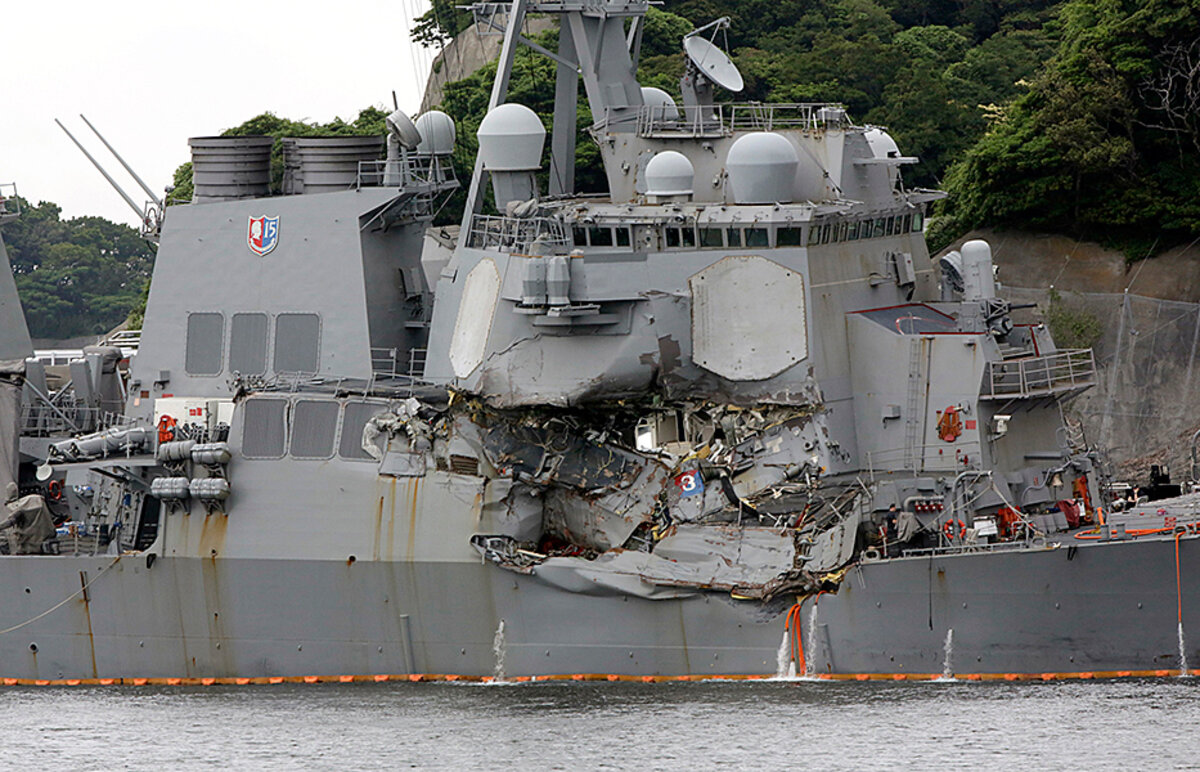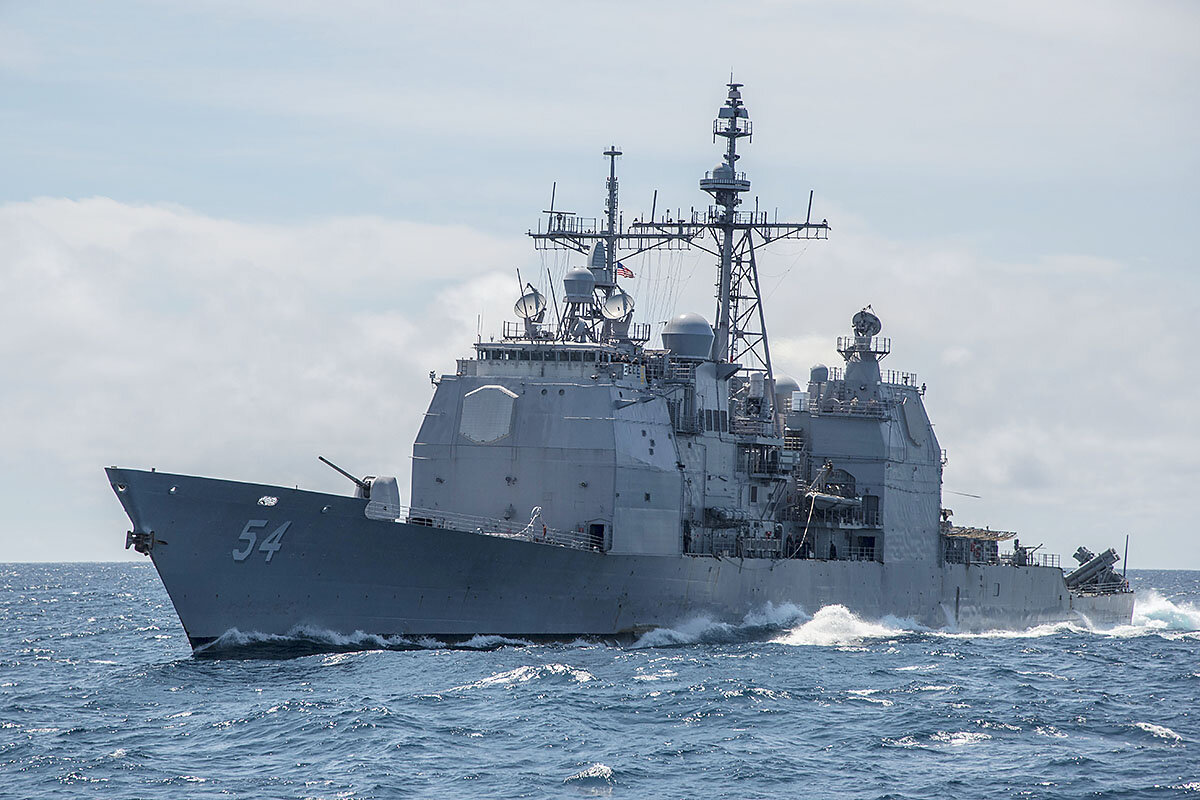Trouble in the Seventh Fleet: what may be behind Navy collisions
Loading...
| Washington
A recent spate of collisions involving US Navy ships from the Seventh Fleet, two of them fatal, has led the Navy to relieve that fleet’s commander, Vice Adm. Joseph Aucoin, reportedly after his superiors lost confidence in his leadership.
The latest collision, Monday off the coast of Singapore, was between the guided-missile destroyer USS John S. McCain and a Liberian-flagged tanker. Ten sailors were reported missing, and the Navy says divers have located the remains of some of those missing in flooded compartments of the destroyer.
The mishap follows a similar tragedy in June, in which seven sailors died when the USS Fitzgerald collided with a merchant vessel south of Japan. That followed two less serious but nonetheless unusual incidents involving ships of the Pacific-based Seventh Fleet in January and May.
According to analysts, the collisions call into question the Navy’s level of military preparedness and point to potential problems with training, maintenance, and the workload endured by sailors.
What is going on?
It could all be down to coincidence – Monday’s collision, for example, occurred in a heavily traveled shipping lane – and any final conclusions on their cause will have to await the results of multiple investigations. Nevertheless, many analysts agree there may be some systemic problems at work here.
There is no indication yet of malicious intent, whether by cyberattack or other means, according to the Navy; rather, analysts say, there is concern that financial constraints, coupled with high demands, are taking their toll on the ability of the military to safely and efficiently execute all that is being asked of it.
“Over the last three or four years, there’s been a realization that the Navy is being stretched pretty thin,” says Bryan Clark, former special assistant to the chief of naval operations, the Navy’s highest ranking military officer.
“It can all be taken back to this major root cause, which is supply not being able to keep up with demand,” adds Mr. Clark, who is now a senior fellow at the Center for Strategic and Budgetary Assessments (CSBA), a public policy research institute based in Washington, D.C.
Long-term review
It is hard to deny that the collisions have tarnished the reputation of the Navy as well as called into question the safety of its sailors. And the organization is taking the situation seriously.
Adm. John Richardson, chief of naval operations, imposed an immediate operational pause following the McCain collision and ordered a longer-term review. Speaking to reporters at the Pentagon, Admiral Richardson said there was “great cause for concern that there’s something out there that we’re not getting at.”
“We need to get at this, get it done,” Richardson said, “so that we can get the lessons learned, act on those root causes, and move forward.” And, he added, the investigation is to consider “every possibility,” including cyberattack or any other kind of intentional action.
The removal of Vice Adm. Aucoin, reportedly just weeks from his expected retirement, could raise suspicions he is taking the fall for issues with far deeper cause. But Bryan McGrath, deputy director of the Center for American Seapower at the Hudson Institute in Washington, says he supports the decision, citing the Navy’s history of responsibility and accountability as one of its foremost strengths.
“Vice Adm. Aucoin is a fantastic guy, a great naval officer, a combat hero – one of the best people in the Navy,” says Mr. McGrath. “But nobody is more connected to these incidents than him. He’s the first place where training, maintenance, and operational tempo all come together.”
It is in these areas – training, maintenance, and operational tempo – that many observers find fault with the current condition of the Navy.
Fewer ships, more demands
The number of ships has diminished in recent decades, falling from 375 in 1996 to 275 in 2016, and yet the demands have, if anything, increased. In particular, the Pacific arena has intensified, as China has flexed its maritime muscle and North Korea has bandied around threats of ballistic missile strikes.
As CSBA senior fellow Clark puts it, the region consequently has become “the canary in the coal mine” for any problems that may be manifesting themselves in the Navy at large.
While there is near-unanimity among analysts that no definitive conclusions can be drawn in advance of the verdict of the Navy’s investigations, there is also broad consensus that a lack of funding is likely to be the primary culprit.
Coming in for particularly scathing criticism is the 2011 Budget Control Act (BCA), something McGrath describes as “a deal with the devil,” apportioning blame equally between Democrats and Republicans, Congress and the White House.
The BCA was an effort to address the nation’s deficit by imposing budget caps on both defense and nondefense parts of the discretionary budget for 10 years.
“It vastly curtailed the amount of money available,” says John Schaus, a fellow in the international security program at the Center for Strategic and International Studies in Washington. That meant, for the Navy, that it had to choose between fundamental priorities such as buying new ships, paying its personnel, and maintaining its equipment.
'Stretched very thin'
All in all, the strain under which the Navy has been operating these past years makes for little surprise when accidents occur, analysts say. Yet to have two such fatal incidents with two US destroyers, and in such quick succession, is “unprecedented,” says Rockford Weitz, director of the maritime studies program at the Fletcher School of Law and Diplomacy, outside Boston.
Dr. Weitz adds that on the one hand, the accidents are understandable, bearing in mind that the Malacca Straits and the Singapore Straits, close to where the McCain collided with the tanker, are some of the busiest shipping lanes in the world. Yet he concedes that another piece of the puzzle is indeed the Navy being both “cash-strapped” and “stretched very thin around the world.”
And the Navy is not the only branch of the military to be suffering. Clark, for example, points to a series of aviation accidents that has plagued the US Marine Corps in recent years.
“We’re now in a position where military readiness is not where it needs to be,” says McGrath of the Hudson Institute. “The Joint Chiefs consistently go to Capitol Hill and talk about current readiness and how the force is fraying, but perhaps they’re making the case too respectfully. It’s time for them to make the case more directly and bluntly.”









